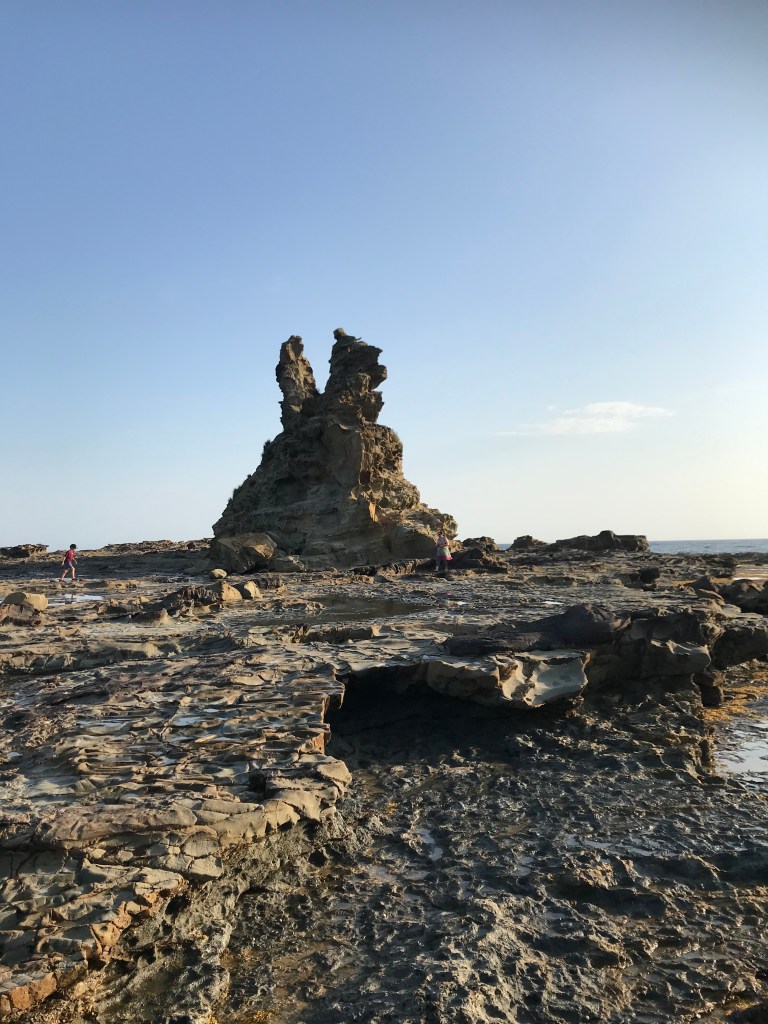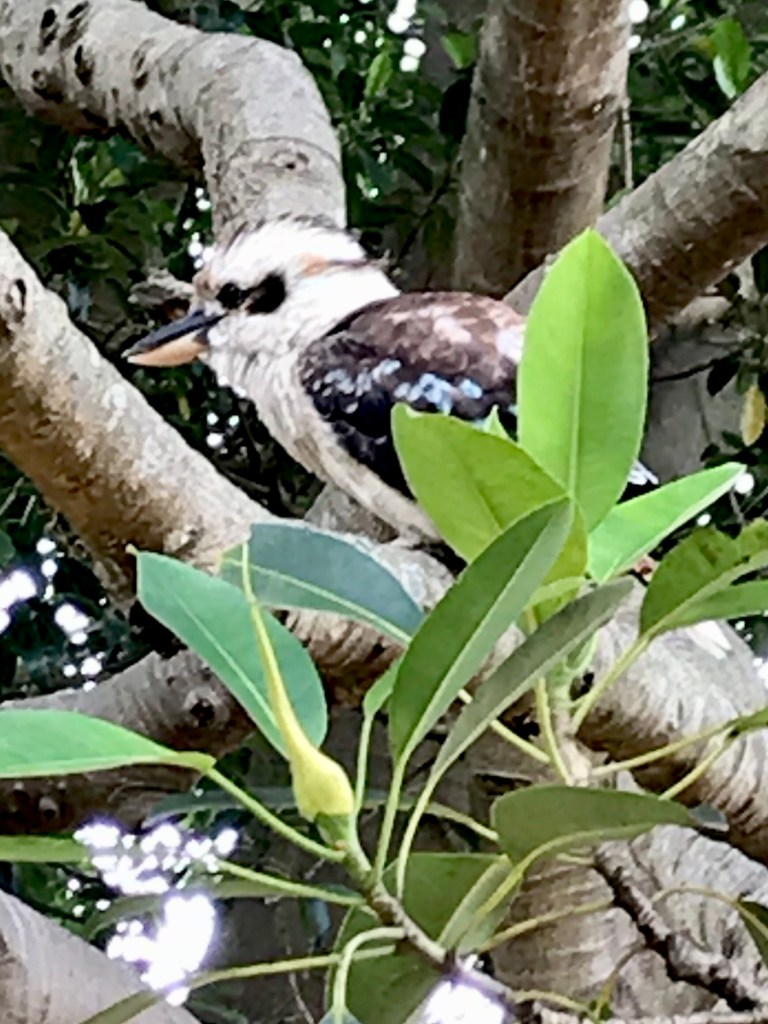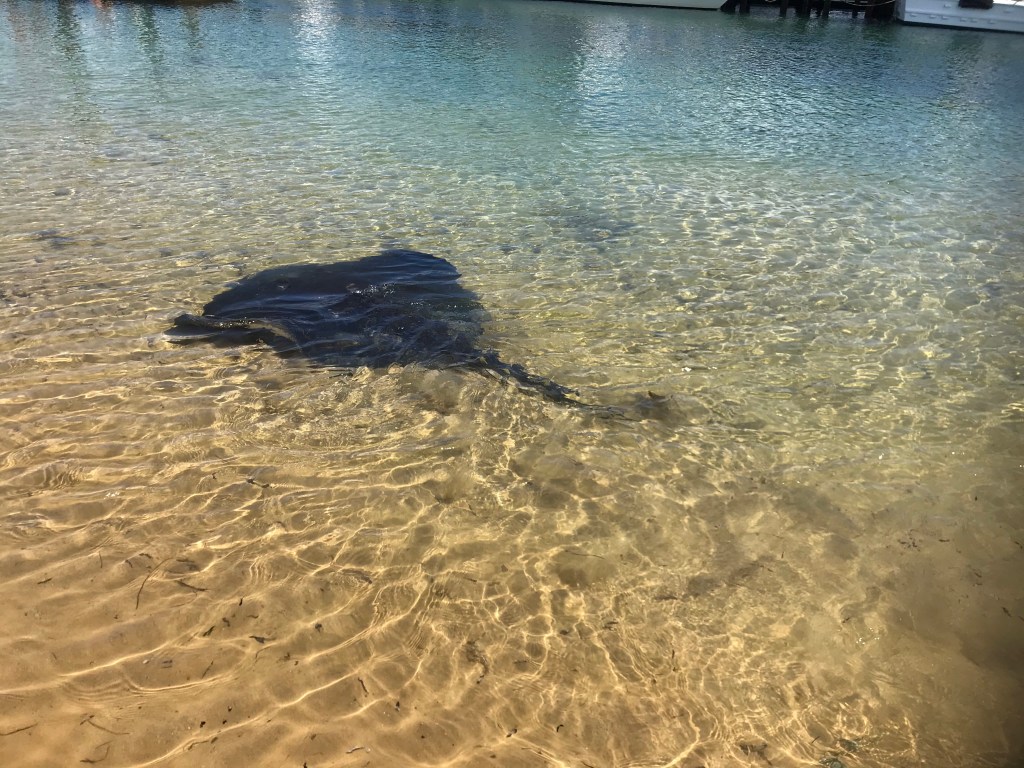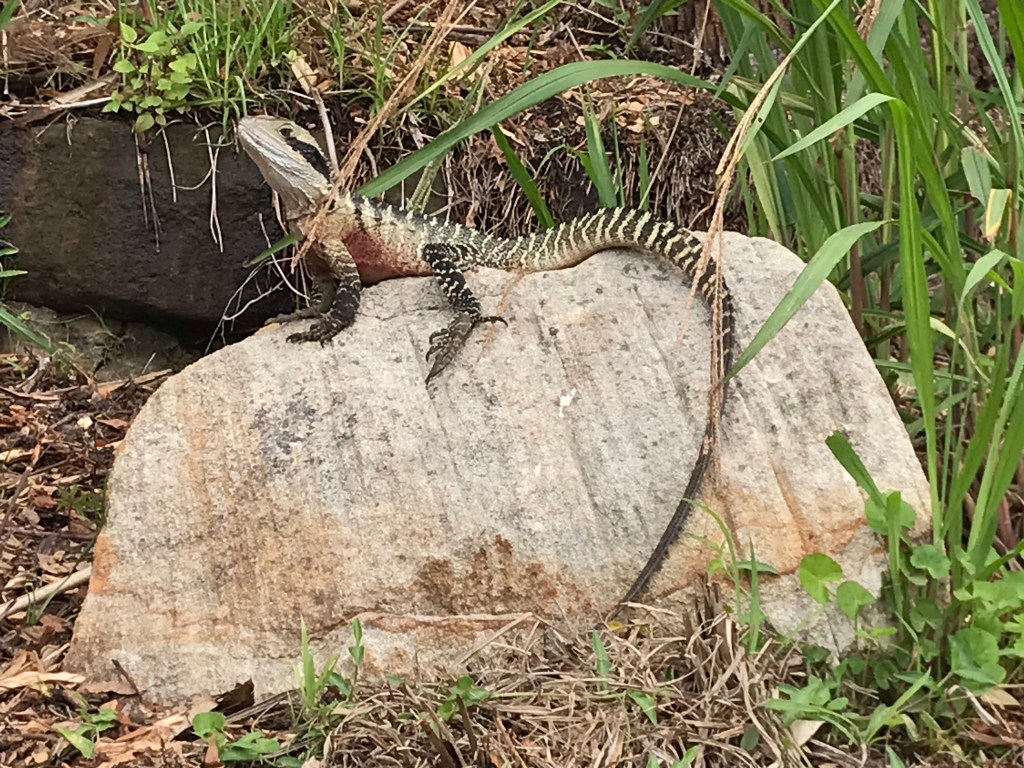“We know everything there; the trees, animals, plants…It’s like a bush library for us”
Djawa Timmy Burarrwanga
“It’s just like a big book to us. This whole land. Now, over the years, people been taking – like tearing pages out of our book so there’s bits and pieces getting lost…”
George Trevorrow
“Life will cook; the seas will rise. The planet’s lungs will be ripped out. And the law will let this happen, because harm was never imminent enough. Imminent, at the speed of people, is too late. The law must judge imminent at the speed of trees.”
Richard Powers
“Every late spring and early summer, my stomach tightens and I hold my breath as the calendar turns to Fire Season.”
Melissa Fu

A month ago I went to see Little Penguins walk up a beach in Australia. As I awaited their arrival, less than a hundred miles to the east, elsewhere in Victoria, people’s homes were burning, or engulfed by smoke. Also under threat, as bushfires tore through their habitats, were countless animals and plants. In New South Wales and South Australia other wildfires were cutting similarly terrible swathes across the land.
On Phillip Island, where a celebrated colony of Little Penguins can be found, I was caught in two minds. I’d been lucky enough to witness this spectacle once already, years before, and had found it profoundly joyful. This time, although complicit, questions about the experience had begun to nag at my mind. Like everyone else, to reach Summerland beach and the penguins, I’d just left a vast car park and filed through a large visitor centre (Before that I had flown some 10,000 miles to be here to visit family).
Although excited, I had begun to feel that there might be something absurd, even wrong about the whole thing. Here, night after night, hundreds of people, thousands over a season, were crossing a threshold of shop and cafe, graphic projections and information displays, trooping down boardwalks to the shore, then sitting and gawping for a time at a not-quite-curated natural event.
This particular visitor centre, in the far south of the world, reminded me of a similar one at Giants Causeway in Northern Ireland. There, although an alternative view of the celebrated coast is possible, most people, myself included, pass through the official channel, before stepping on to that mythic ground, to look and perhaps take a photograph or two of those incredible honeycomb stones. Each shot carefully framed to avoid giving away the presence of other people.
I started to wonder how such grand artificial borders between the human and the wild had come to pass.
Roll up, roll up, here’s a slice of wild, a small sliver that’s still with us. Come and see. Welcome to the Anthropocene, enter through the giftshop.
Were we becoming, or had we become the alien on our own planet?
In Australia, I was reminded of Bruce Chatwin’s theorising in Songlines on our atavistic need for the ‘Beast’ – specifically the sabre-toothed tiger – and how without this rival, without a counter to our fierce, acquisitive intelligence, homo sapiens are significantly lessened, shadow creatures. In our dominance, we are diminished. Perhaps Chatwin was on to something, except that his ‘Beast’ should actually signify every non-human being.
I carried on shuffling down towards the beach. On either side of the walkway through the dunes was a low wire fence; if you glanced beyond it as you walked, you might catch sight of a wallaby, or rabbit, before they skittered into low scrub. Most people though were focused on getting to the penguins. High above, eyeing the movements below, some kind of raptor hovered, one creature that wasn’t ignoring the rabbits.
As the sky over Phillip Island darkened a hush settled on the crowd. A ranger, speaking before the penguins emerged, gave me pause in my thinking. After acknowledging the original human inhabitants of this area – the Bunurong – he explained why the boardwalks and low fences were necessary. He also asked us to reflect on sustainability: wondering whether we’d be happy to describe our own personal relationships as merely ‘Sustainable’.
Reframed in this way, the pursuit of sustainability, for a species or habitat, inevitably didn’t seem enough. The man went on to explain that the goal here was to go beyond that, to rebuild this place; where once, before European settlers arrived in numbers, there had been several colonies of Little Penguins. The aim was, as far as possible, to repair the land, to clear it of invasive predators like foxes – who’d arrived in Australia only thanks to those who wanted to hunt them as they had back in Britain – and to restore the plants and the lost things. The goal, he said, had to be abundance. To fund that, it seemed, this facility with its architectural awards and its car park and its tills was required.
As he spoke, blankets were draped over knees, jumpers pulled on; the heat of the day having vanished with the light. 9.17 pm was the projected start time. I wondered how the rangers could be so specific, but they seemed confident. Seated in tiered rows as if in a cinema or stadium, facing not a screen or a pitch but the sea, we leant forward, straining to catch a first glimpse of the Little Penguins as they left the water. Then, almost on cue, the birds began to emerge from the waves. Hard at first to pick out in the dusk, but easier once the eyes got used to spotting their small forms as they began to totter and waddle up the beach.
A communal ripple of delight surged through the crowd, then for a brief period we all shared in awe and wonder. By the time the first small cluster reached the edge of the dunes my cynicism, if not my questions, had ebbed away. One group at a time, the penguins came in, each with a front-runner, looking around to check that all was clear. I saw these lead-penguins as tiny black-and-white teachers, wobbling as they helped children across a road; or miniature soldiers, leading a beach-landing, looking constantly, fearfully, for snipers.
Of course that was all in my head. The penguins were not human, but small birds doing what they do, despite our presence. They simply wanted to get back to their nests in the sand dunes after days fishing the Bass Straight and the Tasman Sea beyond.
***
December, 2019. I was in Melbourne to visit my brother and his family with my wife and our two young sons. Within hours of arriving, I’d begun to imagine that Australia’s wild things were prolific, even in the cities. To encounter nature, an animal, plant or insect of some kind you never had to travel far. Birds seemed especially present, both in number and variety. During the stay, I read Richard Powers’ epic of trees and people, The Overstory. Towards the end of the book, a character notes with pleasure the way that birds often come to us, suggesting that of all the creatures we share this planet with, ‘the birds, the birds are a gift’.
Never had this sentiment seemed more true to me than in Australia. Even my brother and sister-in-law’s small back yard in suburban Carnegie, appeared to brim with crawling, flying, screeching and creeping things at all times. Possums scrambled between tree-tops at dusk, a huntsman spider on the kitchen window frame terrified and fascinated my children. Rainbow lorikeets, Butcher birds, Australian Magpies – bemusingly possessed of a soothing, bubbling song, unlike the harsh voices of their European namesakes – Noisy Miners (invasive and everywhere), Galahs and Rosellas seemed to be all over the place, pinking things up. In the mornings a dozen or more calls from birds I couldn’t identify heralded the start of each day.
On the streets outside, paperbark trees lined the pavements. Each specimen offering a variety of fascinations in their endlessly twisting, textured folding skins. In local parks, eucalypts seemed massively, fluidly alive in their writhing leggy forms. All of them more than simply trees, but thriving industrial estates, run by frenetic columns of marching ants.
All of this nature appeared to be on tap, but to be there in Melbourne, during a summer of killer fires, was disconcerting. Although increasingly aware of the pace of climate change, or climate emergency back home, here the movement felt faster and more urgent than ever. This was Life going wrong at speed, not a sad decline over decades or years, but a race to destruction on fast forward.
The more news I consumed, the more I realised bushfires were only one symptom of a wider failing. One striking example being the threat to eucalypts – yes, even gum trees, those ubiquitous icons of Australian flora, which I’d felt so vividly alive, are themselves in some danger of disappearing; thanks to fire and clearance, according to a recent report by the International Union for Conservation of Nature.
The Australian government’s own website has the following to say about the country’s natural environment: “Australia is one of the most biologically diverse countries on the planet. It is home to more than one million species of plants and animals, many of which are found nowhere else in the world, and less than half have been described scientifically.”
Melbourne writer Sophie Cunningham in her 2019 book City of Trees, looking to other figures, notes that “We [Australians] have the worst mammal extinction rate in the world and a massive 1700 species of our animals and plants are listed by the Australian Government as being at risk of extinction.” This, she goes on to explain, is largely down to loss of habitat, adding that some “7.6 million hectares of [threatened-species] habitat had been destroyed between 2000 and 2017.” And that was before this summer’s fires.
Yet, wherever we went; in the city, on trips to Phillip Island, Wilson’s Promontory – a stunning national park in Victoria, or Inverloch, a coastal town, around 90 miles south east of Melbourne, we’d see and marvel at, what appeared to be great numbers of birds, or insects, fish, lizards, crabs, great old trees, or green fern gullies. On a walk through a wood to a beach in Walkerville – ‘A Matt walk’ as my brother Will and his wife Maddy touchingly called it, between the maddening, face bothering flies that tracked our path, we even stumbled across a goanna up a tree.
I suspect the phenomenon known as Shifting Baseline Syndrome is multiplied if you’re a tourist. What does an impression of ‘lots’ or ‘great numbers of’ animals mean when you have nothing to compare quantities with?




All the while, in other parts, in some cases not so far from where we were, bushfires continued to shake the country. 2018’s fires and extreme weather events had previously been dubbed the ‘angry summer’ by Australia’s Climate Council, this year’s, by late December were already worse – and the season wasn’t expected to peak until February.
On the day we had arrived protestors could be seen in the news holding up placards asking ‘ScumMo where are you?’ A reference to Australian PM Scott Morrison, who was holidaying in Hawaii while fires raged across many regions.
During the course of the Christmas holidays, once Morrison had deigned to return, TV news bulletins – though on Fox not so much – mostly lead with reports covering the events around the latest bushfires, swiftly followed by reaction from Morrison or other ministers, as they visited affected people and places, whilst playing down or denying the fires’ relation to climate emergency.
Before New Year’s Eve, we visited Eagles Nest, a strikingly curious landmark near Inverloch, off the Bunurong Coast Road. The strange crown-like rock formation is made from ancient sandstone, its rocks and those of the surrounding platform having been battered and worn over time by constant, restless waves. Seabirds wheeled all around. Small caves urged investigation and countless rock pools rippled invitingly, revealing, all manner of plants and animals: from sea stars and urchins, to elephant snails, shrimps and notched shore crabs.

Just after New Year, on January 2nd, PM Morrison visited Cobargo, New South Wales, a village devastated by fires. There local resident Zoey Salucci-McDermott refused to shake the premier’s hand, trying instead to tell him of the losses faced by her community. Morrison forced a handshake on the distraught woman, before turning his back on her.
We continued to revel in seeing wildlife of all kinds, often sightings that were nothing unusual to locals, but a strange delight to us. Even yellow warning road signs in many places seemed to indicate lavish quantities of wildlife crossing: kangaroos, emus, wombats, echidnas – sometimes apparently all at once.
Everywhere we went bird watching without trying. Kookaburras – on telegraph wires, or branches, looking like cartoonish Kingfishers on steroids – Currawongs, White Ibis, Cockatoos, Black Swans, Silver Gulls, Pacific Gulls, Honeyeaters and patrolling the beach at Walkerville, a Sooty Oyster Catcher…




One day at the edge of the beach in Inverloch, I saw a Superb Fairy-Wren, and did find it superb, like a child’s drawing of a bird made real, a tiny quickening thing with a black crown and an almost neon blue stripe.
At San Remo, beneath the bridge to Phillip Island – home of the Little Penguins – we saw Pelicans, which we had expected and Stingrays swimming nearby, which we had not.
Perhaps most memorably, near the tea-stained Tidal River in Wilson’s Promontory, we accidentally encountered a Wallaby by some bushes as it ate. A small, hushed group of us attempted to return its unreadable stare, during a brief few moments, before it seemed to shrug and nose back to its lunch.
On January 3rd, the Guardian reported that cameras set up to record the dunnart, (a rare mouse-like marsupial), on Kangaroo Island had been destroyed by bush fires, likely along with many of the animals themselves.
Back in Melbourne that evening, my brother and I took our kids to see a football match – Melbourne City versus Western United. Throughout the game, the sky over the stadium was grey and dark, thick with the haze of distant bushfires. Not long before the end of the game, Silver Gulls (looking a lot like the Northern Hemisphere’s Common Gull) began to fill the air; impatient for the scraps of food they suspected the crowd would leave behind.
Across social media, a variety of lies about Australia’s national emergency had been spreading quickly amongst right-wingers and climate deniers. Many then carried further and faster as others retweeted and reposted them, sharing their disgust at a scattergun array of conspiracy theories that alternately blamed the bushfires on an ‘arson emergency’, eco-terrorists, Islamic State, Chinese billionaires and land clearance for a high speed raillink along Australia’s east coast. Those peddling these untruths included the US President.
In Sydney, one evening, my wife and I delighted in seeing a Flying Fox waft past down the middle of a street in the CBD, a prosaic occurrence, apparently of little interest to anybody else nearby. On a coastal walk around Manly, we read about and hoped to spot an Eastern Water Dragon. One would do, we saw lots, many of them close to and amongst bathers and visitors who were sitting in and around the rocks of Shelly Beach.
Further around the coast at North Head, we wanted to see a famous view across the bay towards the downtown Sydney skyline, but the smoke haze was too thick. Closer to hand there were lots of yellow and grey striped spiders, I’m not sure what kind, possibly Golden Orbs, but I couldn’t help admiring the webs’ strength, as they held up against constant buffeting from the wind sweeping the cliffs. Walking back to the ferry we passed multiple signs warning drivers to look out for bandicoots.
At Sydney’s Botanical Gardens, we tried to spot long finned eels in the fishpond. A nearby information sign explained that despite the pond being drained and cleared every so often, the eels somehow, always made their way back, scaling the harbour walls and snaking across the grass before re-joining the other fish.
Always there was something to take pleasure in seeing, always the ongoing news of fires, along with smoke haze and smells of distant burning, gave a constant reminder that nothing could be taken for granted. I’d notice something and point it out to the children, then privately wonder whether that species of bird, or fish, or plant would still be here if, one day in the future, the boys ever came back. Every sighting might be a farewell.
The bushfires, along with PM Morrison and his ministers’ remarkable lack of vision and empathy, continued to be reported with grim regularity throughout our stay. By the time we were due to come home, some 19 active fires were burning across Victoria alone, enveloping over 1.3m hectares of land, with 1,500 firefighters working to tackle them.
January 13th, in Mallacoota, East Gippsland, residents cut off by the fires had to be rescued by sea, others stranded in the area were evacuated by Australian defence forces in armoured vehicles. Days later, in the Macleay River, NSW, Hundreds of thousands of native fish died as ash and sludge from bushfires were washed into the water by rain.
On the 18th, in Nelligen, New South Wales an exasperated volunteer fire-fighter Paul Parker was recorded by a local TV camera crew angrily swearing at the Australian PM, telling him: “I’ve lost seven houses in Nelligan. I’m not going to lose any more,” followed by, “Tell the P.M. to come and meet me. Paul Parker, in Nelligan. Meet you any day, pal.” The incident quickly went viral.
Back home, on the 23rdmy sister-in-law messaged to share news of mud falling from the skies over Melbourne. This biblical sounding event occurred when a dust storm met a weather front, causing what Australian news called ‘dirty rain’ to fall over the city.
There is a strange jarring of realities right now. In one world, Morrison and his ilk talk of the importance of coal and jobs and economic growth, even as the fires spread. In another, others see what’s happening, reel at images of charred roos and koalas, at people driven out of their home and communities, at firefighters overwhelmed – even killed in the fires they’re trying to stop. Yet even seeing the plight of whole towns and the deaths of so many of Australia’s charismatic superstars, there are those who retain faith in the Morrison world view.
I think back to the night at Phillip Island, and the ranger’s rallying cry to not settle for sustainability, but to work towards abundance. I remember being in the crowd shuffling back from the beach, not unlike the Little Penguins we followed, peering into the gloom to glimpse the determined birds as they wobbled home.
Not long before, a tannoy announcement had asked people to check under their vehicles before driving away, just in case any penguins had wandered too far and crept underneath and into, what to them, was a safe dark space.
Back in that huge car park, I looked around and saw people stopping to crouch down by their cars. Some even flattened themselves to the ground. For a moment I forgot what they were doing and why. Then I remembered. And although absurdly inconsistent with what we were all about to do next, in that shared impulse of care, I saw a small, strange flicker of hope.


“The state of the environment report – a review completed by scientists last year but held back by the Morrison government until after the federal election”
https://www.theguardian.com/environment/2022/jul/19/labor-says-it-wont-put-head-in-the-sand-as-it-releases-shocking-environment-report
Fire Relief Charities
Fire Relief Fund for First Nations
https://www.gofundme.com/f/fire-relief-fund-for-first-nations-communities
Red Cross Australia
https://www.redcross.org.au
WWF
https://support.wwf.org.uk/australia-bushfires
City of Trees, Sophie Cunningham. The Text Publishing Company, 2019.
The Overstory, Richard Powers. Vintage, 2018.
The Willowherb Review (2) To outlast the flames, Melissa Fu.
https://www.thewillowherbreview.com/to-outlast-the-flames-melissa-fu
The Meaning of Land to Aboriginal People
https://www.creativespirits.info/aboriginalculture/land/meaning-of-land-to-aboriginal-people
The Inward Migration in Apocalyptic Times Alexis Wright
BBC Sports commentator narrates penguin parade https://www.theguardian.com/global/video/2020/may/12/bbc-sport-commentator-andrew-cotter-lends-voice-to-penguin-parade-on-phillip-island-video
The New Yorker
https://www.newyorker.com/news/as-told-to/the-firefighter-whose-denunciation-of-australias-prime-minister-made-him-a-folk-hero
Eagle’s Nest A Guide
http://www.sgcs.org.au/leaflets/Environmental_Activities.pdf




Pingback: Please don’t call it a blogiversary: lessons from a decade of blogging | Richly Evocative
Was it Nero who “fiddled while Rome burned”?
LikeLiked by 1 person
Thoroughly enjoyed reading this, you have captured so completely. The birds tell me they are missing you and to come again. The yellow and grey striped spiders at North Head near Manly were probably Golden Orbs.
LikeLiked by 2 people
Thanks Dazza. Really glad you liked it – tried to convey some sense of the weirdness of being there seeing some of the incredible flora and fauna, whilst not far away fires were destroying lives and habitats. Sorry not to be able to catch up on this trip. Cheers
LikeLike